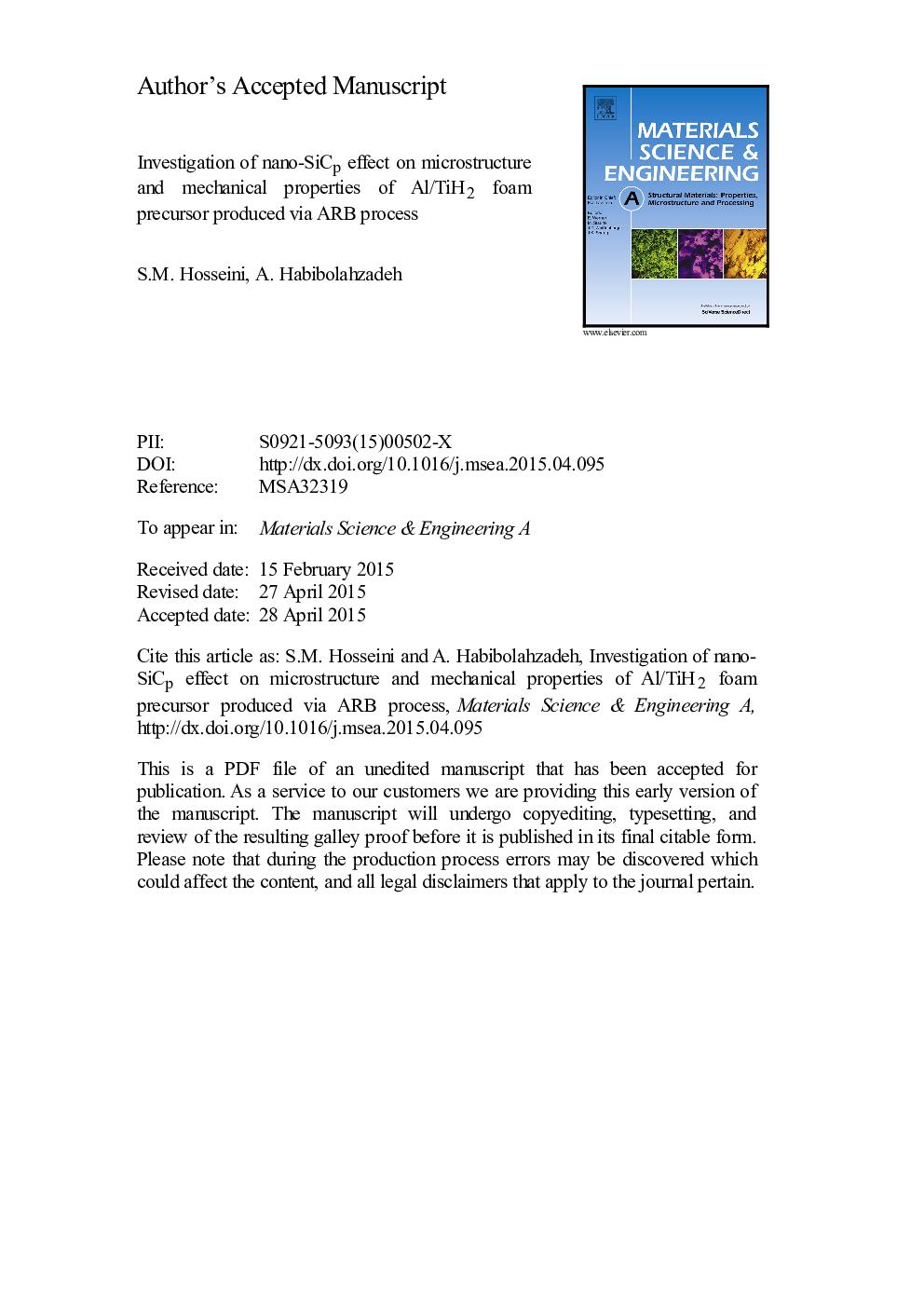| Article ID | Journal | Published Year | Pages | File Type |
|---|---|---|---|---|
| 7977501 | Materials Science and Engineering: A | 2015 | 28 Pages |
Abstract
In this study, a new type of hybrid composite which can be potentially used as a foam precursor was achieved by 0.75 TiH2 and 0.75 nano-SiCp addition (wt%) between 5 pure Al strips, followed by 6 accumulative roll bonding (ARB) cycles at room temperature. The effect of nano-SiC particles addition on the resulting microstructures as well as the corresponding mechanical properties of the products was investigated. Al/0.75Â wt% TiH2 sheets were also fabricated by the ARB process to compare with the hybrid nanocomposite specimens. Scanning electron microscopy (SEM) and related EDS color images revealed that applying 6 ARB cycles led to fairly homogeneous distribution of the TiH2 and nano-SiCp and elimination of porosity between the particles and matrix. It was also found that the tensile strength of the Al/TiH2/nano-SiC hybrid composite was about 1.27 times higher than that of the Al/TiH2 precursor. SEM observation of fractured surfaces showed that the failure mechanism of the composite and nanocomposite was shear ductile rupture.
Related Topics
Physical Sciences and Engineering
Materials Science
Materials Science (General)
Authors
S.M. Hosseini, A. Habibolahzadeh,
